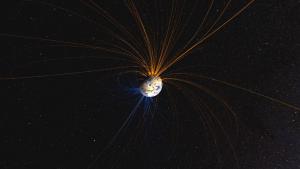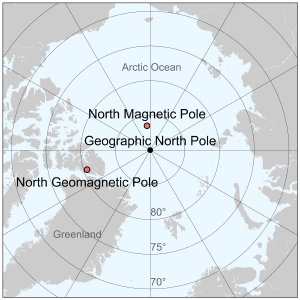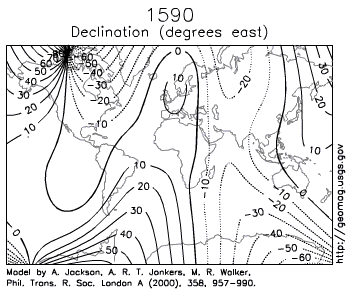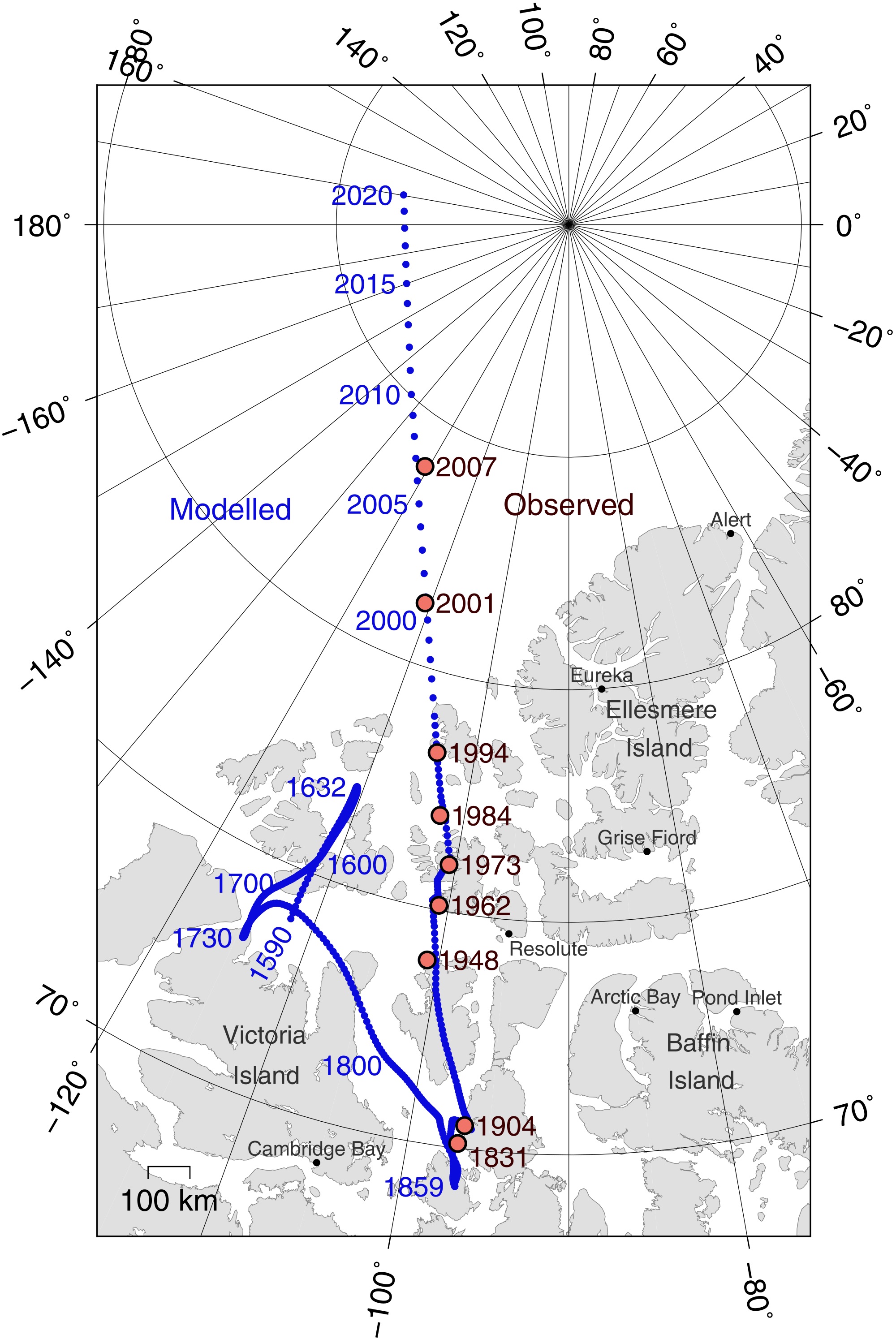Blog
The Wandering North
10 July 2020
 NASA Goddard Space Flight Center
NASA Goddard Space Flight CenterIf you’ve ever used a compass, you know that the magnetic needle always points North. Well, almost North. If you just happen to be out camping for the weekend, the difference doesn’t matter. For scientists studying the Earth’s interior, the difference is important. How Earth’s magnetic field changes over time give us clues about how our planet generates a magnetic field in the first place.
 Wikipedia user Cavit
Wikipedia user CavitThere are two types of magnetic North Pole. One is the geomagnetic pole, which is based on the dipole approximation of Earth’s magnetic field. This is where you imagine the Earth as a giant bar magnet. The magnetic field comes out of the South geomagnetic pole of the magnet, then loops around to the North geomagnetic pole. The true North magnetic pole is where the magnetic field lines are perpendicular to the surface of the Earth. These two poles are not in the same location since Earth’s magnetic field is not a simple bar magnet.
 U.S. Geological Survey (USGS)
U.S. Geological Survey (USGS)Earth’s magnetic field is generated by a magnetic dynamo. Liquid iron in Earth’s outer core convects and spirals to generate electrical currents. These currents in turn generate a magnetic field. It’s a complex process involving thermal flow, the Earth’s rotation, and other geological activity. Computer simulations are often not accurate enough to account for the details of Earth’s magnetic field, but the models are getting better. Recently a team compared several computer simulations with the long-term variations of Earth’s magnetic field, and they learned a few interesting things.1
 Wikipedia user Cavit
Wikipedia user CavitOne of the ways we know that our magnetic field is not caused by a magnet locked into the Earth’s core is because it changes over time. The change is gradual, but it has been directly observed since the 1600s. We also know that these variations have occurred for at least the last 20 million years by measuring the magnetism of rocks. When we look at rocks along the ocean floor of the mid-Atlantic rift, we also find that the Earth’s magnetic field flips polarity about every 200,000 years or so. But these magnetic reversals pose a challenge for the dynamo model. How could large flows of iron within the Earth have such unstable periods?
This recent study answers this challenge with new computer models. They demonstrated that the dynamo model can account for magnetic reversals. Before these reversals occur, the location of the magnetic poles can vary significantly, as much as ten degrees per year. That would be a drift of more than 25 kilometers a day.
While that is surprisingly fast, it should also give us a bit of comfort. The drift of the magnetic north has been increasing over the last couple of decades, leading some to speculate that Earth’s magnetic poles could flip any time soon. But even in recent years, the drift is only about a tenth of a kilometer a day. So it looks like a magnetic reversal is still a long way off.
Christopher J Davies & Catherine G Constable. “Rapid geomagnetic changes inferred from Earth observations and numerical simulations.” Nature Communications 11, 3371 (2020) ↩︎